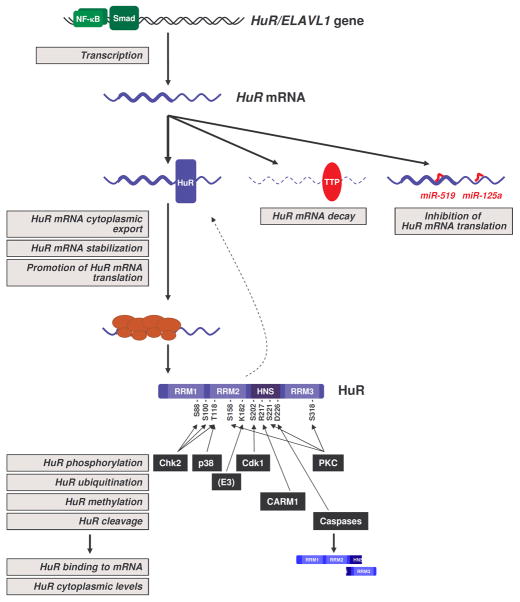Figure 1.
Regulation of HuR expression and function. The schematic depicts the current understanding of HuR regulation. Transcription of the HuR/ELAVL1 gene is controlled by the transcription factor NF-κB. The HuR mRNA is positively regulated by enhanced export to the cytoplasm, stabilization, and enhanced translation but HuR itself; the HuR mRNA is negatively regulated by TTR-RBP tristetraprolin (TTP), which promotes HuR mRNA decay, and by microRNAs miR-125a and miR-519, which repress HuR translation. HuR protein is subject to phosphorylation by Chk2, which affects [HuR-mRNA] interactions, by Cdk1, which affects HuR levels in the cytoplasm, and by p38 and PKC, which affect both [HuR-mRNA] interactions and cytoplasmic HuR levels. Methylation by CARM1 can also affect HuR subcellular distribution and binding to mRNAs. Ubiquitination of HuR by an as-yet unknown E3 ligase controls HuR protein stability, and caspases can cleave HuR into two fragments with different cellular properties. Gray squares indicate steps in which HuR expression or function are regulated. See text for further details.

